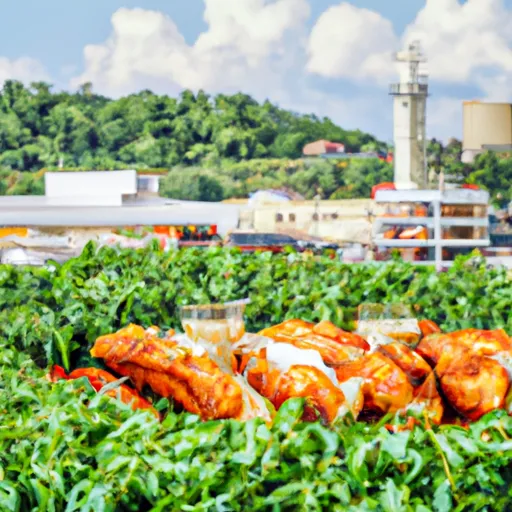-
 Snoflo Premium
Snoflo Premium
Get unlimited access to all our content
With no Ad interruptions! - Start Your Free Trial Login with existing account
Rickman
Eden Index
Climate
7.6
•
Recreation
2.2
•
Community
0.8
•
Safeguard
4.0/10

Rickman, Tennessee is a small community located in the heart of the state, known for its picturesque landscapes and outdoor recreational opportunities. The climate in Rickman is characterized by hot, humid summers and cool, mild winters. Precipitation is evenly distributed throughout the year, allowing for lush vegetation and diverse ecosystems.
Hydrology plays a significant role in Rickman's natural beauty, with the community being surrounded by several bodies of water, including the Obey River, Roaring River, and several creeks. These water sources provide ample opportunities for fishing, boating, and other water-based activities.
Rickman also boasts an abundance of outdoor recreation opportunities. The nearby Standing Stone State Park offers scenic trails for hiking and biking, as well as opportunities for camping and picnicking. The park is home to the beautiful Standing Stone Lake, where visitors can enjoy swimming, canoeing, and fishing.
Overall, Rickman, Tennessee provides a perfect blend of stunning landscapes, diverse hydrology constituents, and numerous outdoor recreation activities, making it an ideal destination for nature enthusiasts and outdoor adventurers alike.
What is the Eden Index?
The Snoflo Eden Index serves as a comprehensive rating system for regions, evaluating their desirability through a holistic assessment of climate health, outdoor recreation opportunities, and natural disaster risk, acknowledging the profound impact of these factors on livability and well-being.
Climate Health Indicator (CHI): 7.6
Rickman receives approximately
1393mm of rain per year,
with humidity levels near 84%
and air temperatures averaging around
14°C.
Rickman has a plant hardyness factor of
6, meaning
plants and agriculture in this region thrive during a short period during spring and early summer. Most
plants will die off during the colder winter months.
By considering the ideal temperature range, reliable water supplies, clean air, and stable seasonal rain or snowpacks, the Climate Health Indicator (CHI) underscores the significance of a healthy climate as the foundation for quality living.
A healthy climate is paramount for ensuring a high quality of life and livability in a region, fostering both physical well-being and environmental harmony. This can be characterized by ideal temperatures, reliable access to water supplies, clean air, and consistent seasonal rain or snowpacks.
Weather Forecast
Streamflow Conditions
Upper Cumberland
Area Rivers
Upper Cumberland
Snowpack Depths
Upper Cumberland
Reservoir Storage Capacity
Upper Cumberland
Groundwater Levels
Recreational Opportunity Index (ROI): 2.2
The Recreational Opportunity Index (ROI) recognizes the value of outdoor recreational options, such as parks, hiking trails, camping sites, and fishing spots, while acknowledging that climate plays a pivotal role in ensuring the comfort and consistency of these experiences.
Access to outdoor recreational opportunities, encompassing activities such as parks, hiking, camping, and fishing, is crucial for overall well-being, and the climate plays a pivotal role in enabling and enhancing these experiences, ensuring that individuals can engage in nature-based activities comfortably and consistently.
Camping Areas
| Campground | Campsites | Reservations | Toilets | Showers | Elevation |
|---|---|---|---|---|---|
| Harrison Bay State Park | 149 | 721 ft | |||
| James H Sloppy Floyd State Park | None | 720 ft | |||
| Coosa River County Park | None | 591 ft | |||
| Lillydale - Dale Hollow Lake | 114 | 653 ft | |||
| Standing Stone State Rustic Park | 36 | 986 ft | |||
| Cloudland Canyon State Park | None | 1,847 ft | |||
| VFW County Park | None | 1,096 ft | |||
| Willow Grove - Dale Hollow Lake | 83 | 697 ft | |||
| Chester Frost Park | None | 750 ft | |||
| Tally Valley County Park | None | 1,117 ft |
Nearby Fishing
Nearby Ski Areas
Catastrophe Safeguard Index (CSI):
The Catastrophe Safeguard Index (CSI) recognizes that natural disaster risk, encompassing floods, fires, hurricanes, and tornadoes, can drastically affect safety and the overall appeal of an area.
The level of natural disaster risk in a region significantly affects safety and the overall livability, with climate change amplifying these risks by potentially increasing the frequency and intensity of events like floods, fires, hurricanes, and tornadoes, thereby posing substantial challenges to community resilience and well-being.
Community Resilience Indicator (CRI): 0.8
The Community Resilience Indicator (CRI) recognizes that education, healthcare, and socioeconomics are crucial to the well-being of a region. The CRI acknowledges the profound impact of these elements on residents' overall quality of life. By evaluating educational resources, healthcare accessibility, and economic inclusivity, the index captures the essential aspects that contribute to a thriving community, fostering resident satisfaction, equity, and social cohesion.

